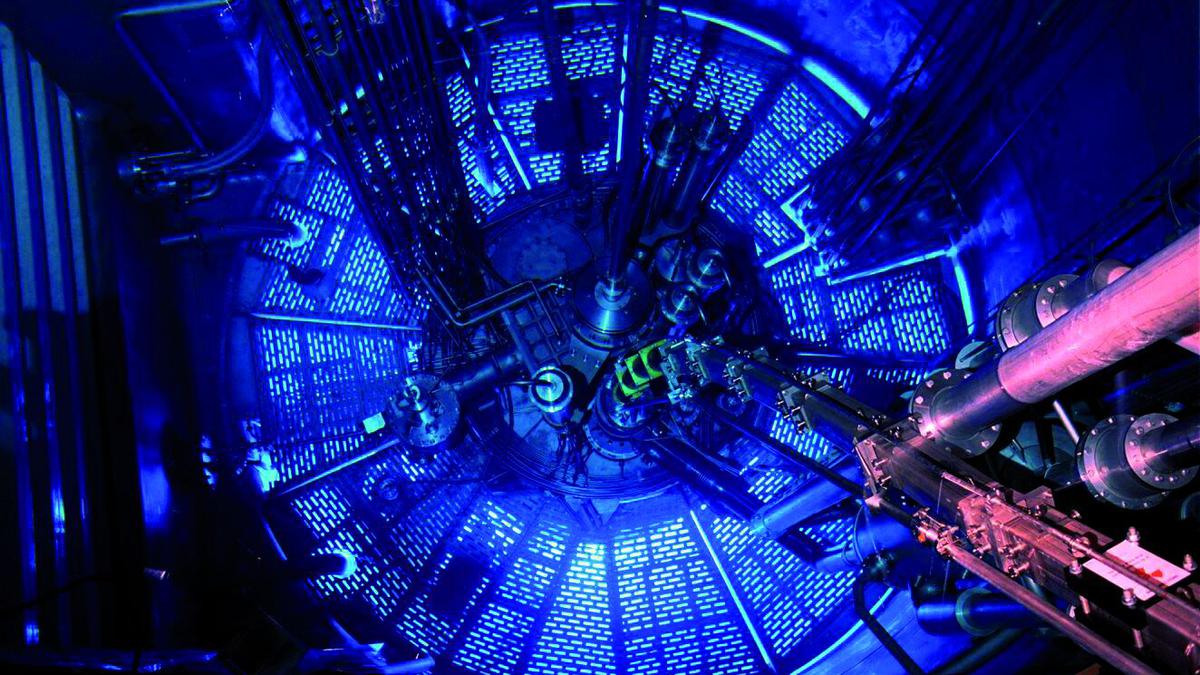Signs of particle expected to crack decade-old anomaly weaken in new data

An experiment in France has dealt a heavy – but far from fatal – blow to the quest for a mysterious cosmic particle called the sterile neutrino.
Finding these particles is important for scientists to explain a decade-old mystery, with implications for the structure of the universe and the laws of physics. Some have said sterile neutrinos could also be particles of dark matter.
Neutrinos are particles that interact weakly with the force of gravity and with a force involved in radioactive decay called the weak force. They were discovered in 1956. They are the most abundant particles with mass in the universe, produced in copious amounts in the cores of stars.
The antimatter counterpart of a neutrino is the antineutrino. Among other sources, antineutrinos are produced during the radioactive decay of the products of nuclear fission. So nuclear reactors are good places to study them.
Reactor antineutrino anomaly
Twostudies reported in 2011 that there were around 6% fewer antineutrinos being produced at different reactors than expected. The studies used archival reactor data up to the 1980s. Physicists called this the reactor antineutrino anomaly (RAA).
Neutrinos (and antineutrinos) come in three types: electron, muon and tau neutrinos. When they travel through space, each type can transform, or ‘oscillate’, into another type at a rate predicted by theory. When two types can oscillate into each other, physicists say they can ‘mix’.
One explanation for RAA was that the antineutrinos were oscillating into a hitherto unknown fourth type: the sterile neutrino. It was called ‘sterile’ because it was expected to not interact with the weak force, just with gravity.
But on January 11, the STEREO experiment, installed at the Institut Laue-Langevin research reactor in Grenoble, France, reported that it couldn’t find evidence of sterile neutrinos to explain the RAA. The experimental collaboration’s paper was published in Nature.
Jonghee Yoo, an associate professor in the Department of Physics and Astronomy, Seoul National University, called the result “excellent” and that it “demonstrates that our field of research is very active and healthy”. He wasn’t associated with the experiment.
Looking for a deficit
The Laue-Langevin reactor contains uranium-235, an isotope of uranium commonly used as a fissile material. There is a detector a few metres away from the reactor to spot electron antineutrinos.
The reactor emits only electron antineutrinos (not the other types). If they oscillate into sterile antineutrinos, the detector will pick up fewer electron antineutrinos than the reactor is expected to emit, David Lhuillier, a member of the STEREO collaboration and of the Institute of Research into the Fundamental Laws of the Universe in France, explained to The Hindu.
The detector has six cells, each measuring the electron antineutrino flux at a different distance from the reactor. It can detect around 400 particles a day. By comparing each cell’s data with others, “we have shown that the deficit of [antineutrinos] can’t be explained by the mixing of the standard neutrinos with a new sterile neutrino of mass around 1 eV,” Dr. Lhuillier said. “This result is fully independent of any prediction since we are comparing six measured spectra between themselves.”
STEREO is part of a global constellation of experiments studying different aspects of neutrinos, including the RAA. No two are exactly alike in their abilities. All their results together help build the overall picture, like putting together the small pieces of a giant jigsaw puzzle.
So how does the new result jibe with older ones?
‘Tensions’ with other results
The STEREO group wrote in its paper that its results are consistent with the findings of the PROSPECT experiment in Oak Ridge National Laboratory in Tennessee and the MicroBooNE experiment in Fermilab, Illinois, in 2021.
On the other hand, the group excluded results reported by the Neutrino-4 experiment in Dimitrovgrad, Russia, in 2021 and the RENO+NEOS detectors in South Korea in 2022.
“Their results set tensions with the Neutrino-4 and the RENO+NEOS results in the ~eV scale mass of sterile neutrino solutions,” Dr. Jonghee, who has worked with the RENO+NEOS setup, told The Hindu.
The mass of subatomic particles is denoted in electron-volts, or eV. ‘~eV’ means ‘around 1 eV’. To compare, the mass of an electron is around 500,000 eV.
The STEREO group’s paper wrote, “The explanation of the RAA by a few-eV-mass sterile neutrino is strongly disfavoured by STEREO data.” There are explanations for the RAA that involve sterile neutrinos heavier than “a few eV” as well. STEREO’s new results don’t include them.
“Strictly speaking, STEREO rejects the sterile hypothesis to explain the reactor anomaly, meaning that there is no sterile neutrino of mass around 1 eV that would mix with the electronic neutrino flavour at the level of ~10%,” Dr. Lhuillier said.
“A lot lighter sterile neutrinos could very well exist and mix with the electronic neutrinos, and STEREO wouldn’t be sensitive to them,” he continued. “We could also have sterile neutrinos of any mass but mixing very weakly, beyond the STEREO sensitivity. The mixing would be too weak to explain the reactor anomaly but this doesn’t prevent this kind of sterile neutrinos from existing.”
The problem with a heavy sterile neutrino, however, is that it might have distorted the universe’s large structures in a way that we don’t find to be the case today. “The KATRIN experiment aiming at measuring the absolute mass of the standard neutrinos will soon put direct constraints on the potential heavy sterile neutrinos,” Dr. Lhuillier said.
Nonetheless, “while the STEREO result is marginal to rule out the parameter space completely, I consider this an excellent milestone and congratulate the STEREO collaboration,” Dr. Jonghee said. “The sterile neutrino search will continue as vast parameter spaces remain wide open, including for particles whose mass is in the order of a few eV.”
He added that the collaboration he is part of now plans “to investigate ~eV scale solutions with an improved experiment setup.”
The search continues
The Neutrino-4 collaboration is on a similar path. One of its members, Anatoli Serebrov, is a professor at the Petersburg Nuclear Physics Institute in Russia.
“The present situation with sterile neutrinos is very interesting and more complicated than the [announcement] by the STEREO experiment, whose experimental sensitivity is lower than the sensitivity of the Neutrino-4 experiment,” he told The Hindu.
Dr. Serebrov pointed to two pieces of work in progress: another experiment in Fermilab (different from the one that announced the 2021 result) and Neutrino-4’s plans to improve its existing setup, including a new facility with a detector three-times more sensitive than the one in use.
“The exclusion level by the STEREO experiment is about 3 sigma,” Dr. Jonghee said, referring to a measure of the result’s statistical significance. “In experimental physics, this significance level requires further verification, to which I believe the STEREO collaboration and others will pay a lot of attention.”
Efforts to explain the RAA in other ways are also afoot. Recall that the pair of studies published in 2011 said there was a deficit of antineutrinos relative to the expected rate. Some analyses suggest physicists could have overestimated it – something the STEREO paper also indicated.
“Combining STEREO with all other short-baseline experiments at reactors, we can point to a normalisation bias in the reference uranium-235 [emission] spectrum measured in the 1980s as the main origin for the rate anomaly,” Dr. Lhuillier said. (The baseline is the distance between the reactor and the detector.)










